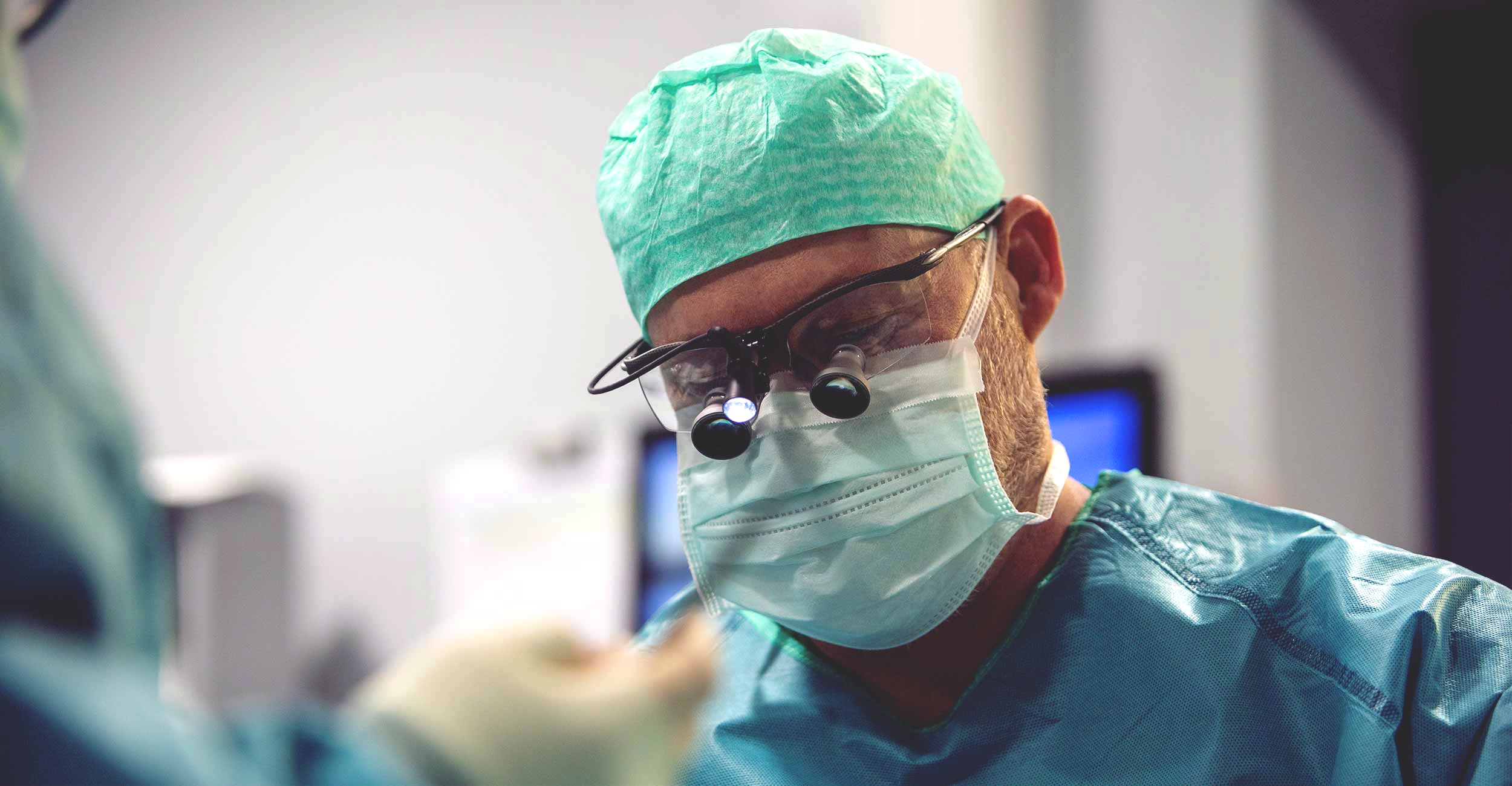Tumor Surgery
In most cases, surgery is the first therapeutic option after a breast cancer diagnosis. The goal is to completely remove the tumor. For many decades, the standard procedure was total breast removal (mastectomy). However, over the past 25 years, the approach has changed significantly. Today, total breast removal is only necessary in a minority of cases; in approximately two-thirds of patients, breast-conserving surgery is possible. Breast-conserving procedures—especially when performed using modern oncoplastic techniques—offer significantly more aesthetically pleasing results compared to mastectomy. Importantly, we now know that breast-conserving therapy (including postoperative radiotherapy) offers no compromise in oncological safety for the patient.
However, mastectomy may still be necessary in some cases. Factors considered include the size and location of the tumor, breast size, tumor type and spread, and, of course, the patient’s personal preferences.
If a patient undergoing mastectomy wishes to reconstruct the breast (either immediately—primary reconstruction—or later—secondary reconstruction), the reconstructive plastic surgeons at Centro Seno Ticino offer all internationally recognized reconstruction options. These include silicone implants and reconstruction using the patient’s own tissue.
Axillary Lymph Nodes
Over the past twenty years, there has been a clear trend toward less radical and less aggressive breast surgery, especially regarding the axillary lymph nodes. These nodes are crucial, as they are typically the first to be affected by metastases in the spread of breast cancer.
For proper treatment, it’s essential to know whether the axillary lymph nodes are involved. While in the past lymphatic tissue was routinely removed in all breast cancer cases, today this is necessary in only 20–25% of cases. Thanks to new techniques, it is now possible to intraoperatively identify and selectively remove the “sentinel lymph nodes”—those most likely to be affected. With this sentinel node technique, usually only 1–2 lymph nodes are removed, significantly reducing the risk of complications compared to traditional removal of 10–20 nodes. As a result, side effects such as lymphedema, reduced sensation, and limited arm mobility, which were previously common, are now rarely observed.

Breast Reconstruction Surgery
The goal of breast reconstruction is to maintain or restore quality of life. It’s important to note that breast reconstruction does not negatively affect the course of a potential breast cancer. Together, we will develop a personalized treatment plan tailored to your needs and oncological considerations. As specialists, we can offer you all recognized reconstruction options:
- Tissue expanders/implants/matrix support
- Autologous tissue reconstruction, including:
- From the abdomen (DIEP flap)
- From the inner thigh (TMG flap)
- From beneath the gluteal fold (PAP flap)
- From the buttocks (S-GAP flap)
- From the back (latissimus dorsi flap)
- From the flank (rotation flap)
- Breast reconstruction with autologous fat grafting (lipofilling)
- Reshaping procedures as part of breast-conserving tumor surgery
- Nipple reconstruction
Lymphedema
Lymphedema may develop without an identifiable cause, or as a result of surgery and/or radiotherapy for breast cancer. The foundation of treatment is always compression therapy combined with lymphatic drainage. In selected cases, surgical treatment may improve lymphedema. Depending on the severity and cause, options may include liposuction or microsurgical techniques. To determine the best treatment for your case, we use both a clinical examination and the latest imaging technologies for lymphatic mapping.